[MENTION=201181]michael1991[/MENTION]
This is great! Glad you did...glad to be able to correspond with another 928 owner!

Seems hard to find other Studer console owners, and far less the 928...not as popular as the more vintage Studer consoles.
Oh I saw that one for sale...it looked a bit had...but it’s okay?
It looks kind of used, but this is all visual, just some missing colour.
And it didn’t come with a manual, correct?
No manual, but as you know, you can find it on the internet.
No mono group modules but 30

of the mono input modules, and 10 of the stereo input modules too, yes?
No groups, but perhaps I will try to find some, or try to build some in the future 

and yes, a insane number of mic inputs
What meter modules are loaded?
Sum A, B, Monitor Plasma with gain reduction and Aux led meters, and correlator
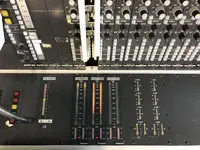
And it looks like yours wasn’t outfitted with the integrated patchbay?
No internal patchbay, but i think from what i read it would be limited in use for me...
Does yours utilize three power supplies?
there are two of them. but they generate a high amount of line noises, so i will replace them at some point.
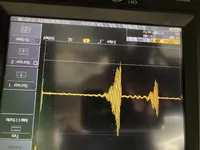
I’m curious why you increased the voltage rating. From what I see the voltage rating of all the caps is very appropriate. I was schooled that going too high above what is called for by the power rail is not necessarily beneficial and potentially detrimental. A good safety margin is wise, but that’s what I was seeing as far as what Studer specified. What are you seeing?
A colleague here at university (member of the digital signal processing group, i work at the chair of communications engineering btw) who had done some testing recommended this. Higher voltages reduce distortions. so i didn't compared them a b with same and higher specs, just chose one step higher...
Every coupling cap, or literally every electrolytic cap?
I think it would be sufficient to just search for the coupling caps, i don't know if or how much of a different this makes, but i bypassed/will bypass every electrolytic cap. Yes, thats another 3500 caps 
I’ll just say you and I are having two totally different experiences with our 928s...mine sounds wide open...I definitely wouldn’t describe it as “vintage” at all. It’s pretty neutral but pretty much everything sounds better through it so far, and it doesn’t get in the way of doing what I want with the sound like for instance with the EQ...imaging is fantastic...I’ve got more clear bandwidth than I know what to do with...low end is clean and clear with plenty of punch if I want or need it...I just switch in the HPF and boost the low shelving filter at around 50Hz...and the high end is just...sweet. And I can hear no difference at all pulling the EQ in and out with the controls zeroed out. No “towel over the sound” anywhere on this thing. And I’d always understood the Philips caps to be good quality. Studer really didn’t skimp on the components anywhere is far as I can see. I mean, the 928 *was* their more budget, if you can call it that, large format mixing desk, but the price point seems like it was dictated more by the feature set (like compared to the 980 for instance)...more scaled down...as opposed to skimping on the quality of the components...or even the values. Like the coupling caps are 100uF parts which is not what you typically see when a company is trying to cut costs...I don’t have the schematics in front of me at the moment so I don’t have the calculated LF knee point on a 100uF coupling cap in the signal path on the 928, but I’m pretty sure its sufficiently good...like probably more than it needs to be but not so much there’s to much compromise with the HF performance. I usually see 47uF or 22uF for coupling caps...sometimes *gulp* 10uF, which is usually too small but purposely chosen because the circuit doesn’t have the headroom to really handle the subsonic content. Here I think we’ve got plenty of headroom throughout the signal path, AND coupling caps that stay out of the in terms of LF bandwidth. Regardless, mine sounds great. I mean, my console sold for $89,000 in 2000. That about $132,000 in 2019 dollars. That’s not a budget console! I don’t think they’d put garbage caps in there...their mantra was “Studer ‘good sound’”. I’m not doubting your caps were shot, and that is cool (and how exciting it must be for you) to swap those caps and have a totally different animal on your hands...a relief in a way I bet...but I bet your situation is something of an exception. What year is your 928?
One of my stereo input modules was recapped last year by the previous owner with Nichicon KA 105C caps...I can’t hear any difference between it and a stock module.
I don’t plan on doing any recapping for some time even though the console came with all the caps to do the whole console...the aforementioned Nichicon 105C parts..KA series are “audio-grade” for what that’s worth. Your post does make me curious...might pull some sample stock caps and measure to be sure.
The same colleague was at an intership at Studer during studies in 2002, one of the enineers at studer told them the Phillips electrolytics weren't the best caps, and they replaced them somewhat around 2000. I don't know the exact sell date, and i did not remove every module so far, but the ones i saw seem to be produced 1997 for the stereo and 2002 for the mono inputs, so no more light blue phillips any more on the latter. (ALL inputs are transformer coupled btw)
Another anecdote to the philips caps. We have a Rhode&Schwarz UPV audio analyzer where the power supply was faulty some time. that mentioned colleague looked at it, pointed at the phillips electrolytics saxing "they are crap", and in the end it was one of them blown up....
At some point i will capture some measurements as well, since we have the equipment
I wonder...was yours stationed in a harsh environment?
To be honest i do not know much about this desk. I found inventory stickers of RTL (european broadcaster) on top of every module. The dealer did not know anything as well and bought the desk from an other person, so i assume i am the fourth owner but the second that does not only storages it.
Right back atcha!
Let me know how servicing of the mic trim pots goes...that’s really the only issue with mine is those are a bit scratchy.
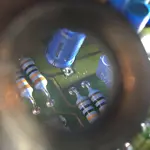






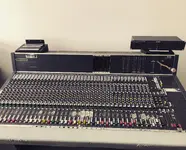

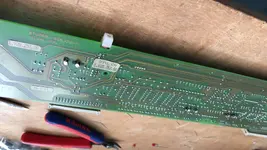

 of the mono input modules, and 10 of the stereo input modules too, yes?
of the mono input modules, and 10 of the stereo input modules too, yes?


 ), then the master section, and then the mono channels, so it takes some time, but if I reach that point, I will share my experiences...
), then the master section, and then the mono channels, so it takes some time, but if I reach that point, I will share my experiences...